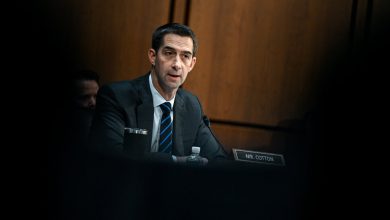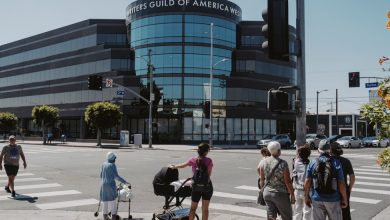An Architect Builds Toward the Future on Mexico’s Border

In July 2020 the Mexico City-based architect Fernanda Canales faced a difficult decision. Tapped to participate in a new federal initiative providing hundreds of civic facilities — like libraries, parks and streetscapes — to under-resourced towns across Mexico, she could either work on relatively familiar sites along her city’s periphery or take on a handful of structures 1,200 miles north in Agua Prieta and Naco, two small, poor towns with high crime rates along the U.S. border.
Agua Prieta’s ignominious claim to fame is being the site of Joaquín “El Chapo” Guzman’s first border tunnel for smuggling drugs and weapons into the United States. Naco has more unpaved roads than paved ones. Given their populations (about 92,000 for Agua Prieta and 6,000 for Naco), both towns have witnessed their outsized share of cartel-related violence, femicide and disillusionment.
At first Canales said “no way” to the border, opting for the safer destination, about two hours from home. But something kept gnawing at her to take on the tougher challenge. Canales, 49, had taught design solutions focusing on the border at Yale and Princeton and written on the topic extensively. “I can’t keep doing this theoretically,” she remembered thinking. She told her family she was opting for the harder choice.
Three and a half years later, her team’s buildings are complete. Many are handsome, remarkable achievements that have met local needs and strengthened fraying social ties. They are also case studies in the profound challenges and just-out-of-reach opportunities of trying to rehabilitate communities via building.

Children from the book club play at the library’s new public park, just feet from the border with its murals in Agua Prieta.Credit…Adam Perez for The New York Times
Programa de Mejoramiento Urbano, or P.M.U., the urban improvement program created in 2018 by Mexico’s powerful Secretariat of Agrarian, Territorial and Urban Development (SEDATU), is one of the largest public construction programs in Mexican history. While major government initiatives had in the past focused on providing housing, schools and other basic needs to marginalized towns, civic spaces accessible to everyone had long suffered from a lack of resources, said Román Meyer Falcón, the secretary of SEDATU. “These are neighborhoods that for decades have not had a field, a sports facility, a public market, a plaza, a road,” he said. (Meyer Falcón, who is just 40, studied architecture — a rarity for a cabinet member.)




